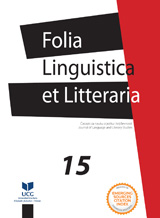Toni Morrison’s Jazz City – A Locus ff Black Pride and Trauma
Toni Morrison’s Jazz City – A Locus ff Black Pride and Trauma
Author(s): Mirjana DaničićSubject(s): Theory of Literature
Published by: Filološki fakultet, Nikšić
Keywords: Space; the locus; Toni Morrison; jazz; racial trauma
Summary/Abstract: Space is never a neutral category, it carries with it a history (personal, political, national, or cultural) and thus is central to the comprehension of individual or collective identity. In her works, Toni Morrison determinedly uses enclosed spaces in order to achieve the connection between space and characters’ identities (in Beloved it is the house at 124 Bluestone Road, in Jazz – Harlem, in Paradise – the town of Ruby, in Tar Baby – a Caribbean island). The novel Jazz can be viewed as a novel about a city: it explores the economic possibilities in the city, creates erotic images typical of urban areas, depicts transformation of individual consciousness and, more than anything, delineates the urban spirit of jazz. On the other hand, it "is a novel historicising racial trauma," portraying black people’s attempt to release themselves from the grip of the past at the time when jazz music, deeply rooted in the black slave experience in the US, started to become widely popular among the Harlem inhabitants. This is how, in Morrison’s Jazz City, black pride entwines with black trauma, making the City one of the main characters in the novel. The author of the paper analyzes the crafty networking of the City, jazz and the characters in Morrison’s literary focus on the dehumanizing effect of the City illustrated in a crime passionnel – the murder of a young girl by her much older lover at the end of novel.
Journal: Folia Linguistica et Litteraria
- Issue Year: 2016
- Issue No: 15
- Page Range: 149-155
- Page Count: 7
- Language: English

